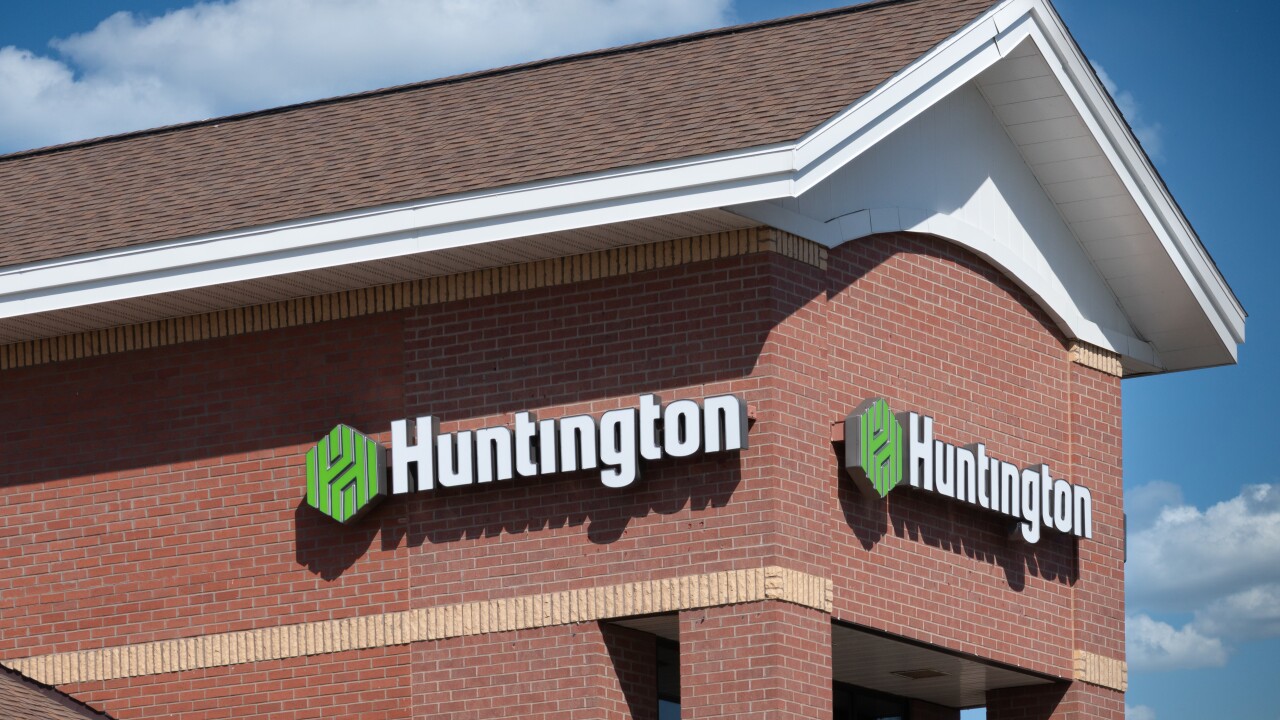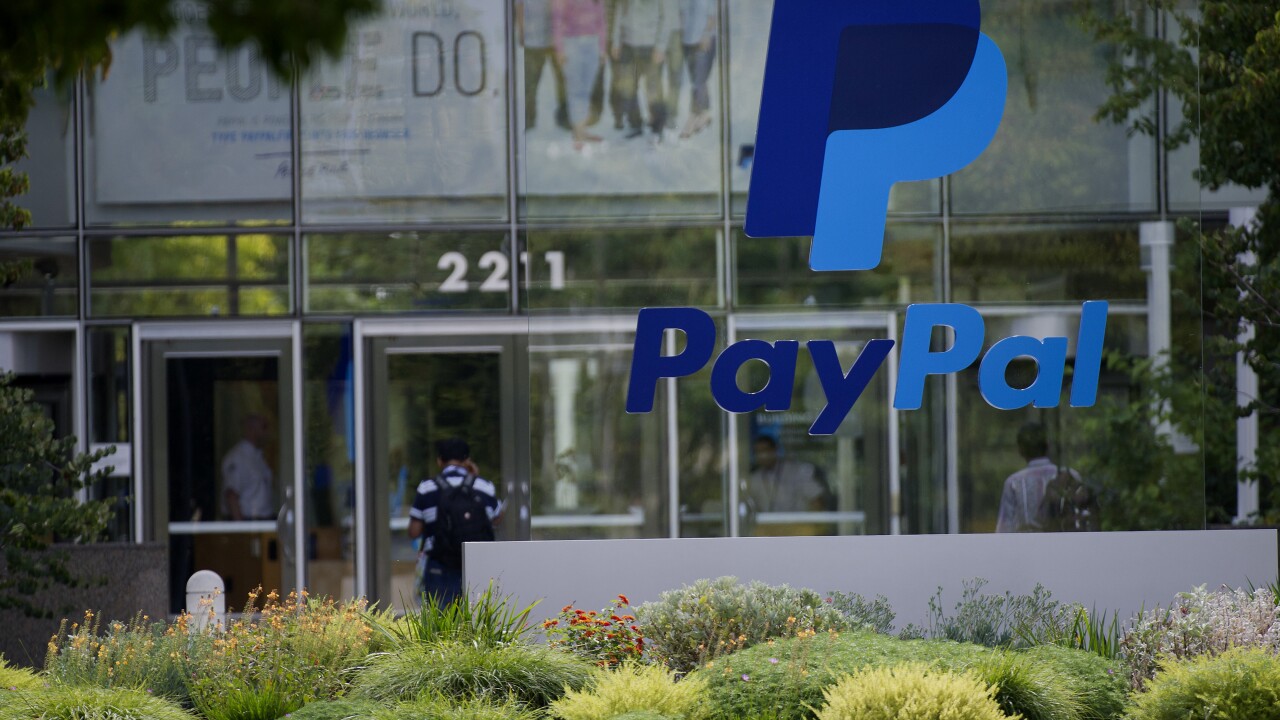
The overdraft-fee battles are again flaring up following a last-ditch attempt by the Biden-era Consumer Financial Protection Bureau to rein in the charges.
The rule would cap overdraft fees at $5 for large and midsize banks, a sharp reduction from many banks' charges of more than $30. Banks could also cap overdraft fees at a level that covers any costs and losses, or they could charge a higher amount if they treat them like loans and disclose their interest rates.
Industry groups have
The industry argues that it's made big changes to overdraft fees over the last four years and that the service must be maintained for cash-strapped Americans who need help to cover emergency purchases. The CFPB, led by Director Rohit Chopra, calls the charges "excessive junk fees" that harm vulnerable consumers, projecting its move will save households $5 billion every year.
Nuances that don't fit either side's narrative can sometimes be lost in the rhetoric. Below are some trends to keep in mind as bankers, regulators and consumer advocacy groups debate the topic.
Declining revenue source
While the level of overdraft charges remains under debate, there is no question that the overdraft picture has evolved markedly from four years ago.
At the time, the new Biden administration seemed poised to crack down on the fees. Many banks had recently relaxed their overdraft policies during the COVID-19 pandemic. Then a couple of banks made major waves on overdraft fees, kicking off a
As a result, the banking industry's overdraft revenues have fallen from $11.7 billion in 2019 to nearly $6 billion last year, according to an analysis that KBRA Financial Intelligence compiled for American Banker.
Big and regional banks have led the decline. The fees have fallen 55% at banks with more than $100 billion in assets, according to the KBRA data, compared with a 46.7% drop at midsize banks with between $10 billion and $100 billion in assets. Community banks with less than $10 billion in assets have had a smaller decline, with overdrafts falling 11%.
The wave of overdraft actions followed a June 2021 announcement from Ally Financial, which
Some banks, in addition to helping customers avoid the charges, sharply reduced how much they penalize them for overdrawing their accounts. Bank of America
Huntington Bancshares, M&T Bank Corp. and First Citizens BancShares have each cut theirs to $15 or less.
Others still charge about $35 per overdraft but have made it easier for customers to avoid overdrawing their accounts, with moves such as giving them a bigger cushion or speeding up their direct deposits. Those include
The Consumer Bankers Association has said banks' innovations have saved customers billions of dollars and the CFPB rule would threaten customers' access to overdrafts. A survey of CBA members found that 90% of its member banks would be forced to cut back on overdraft services if the agency caps the fees at a sharply lower level.
Earnings hit?
Despite the industry curbing its overdrafts, the CFPB rule would still ding earnings at some big and regional banks if it were to take effect.
Among 13 large and regional banks studied by Citigroup analysts, Regions Financial would be most impacted. Overdraft fees make up about 8% of 2025 expected earnings per share at the Birmingham, Alabama-based Regions, Citi analyst Keith Horowitz wrote in a note to clients.
Overdraft fees make up 5% of 2025 expected earnings at Wells Fargo and Columbus, Ohio-based Huntington Financial, Horowitz wrote. That figure is 4% at Charlotte, North Carolina-based Truist Financial, Cincinnati-based Fifth Third Bancorp, Cleveland-based KeyCorp and Pittsburgh-based PNC Financial Services.
Other banks would see a more negligible impact if the rule takes effect in October, which Horowitz cast doubt on given the ongoing litigation from trade groups.
Citizens Financial in Providence, Rhode Island, and Minneapolis-based US Bancorp would see 3% of their earnings impacted, he wrote.
And JPMorgan Chase has a 2% exposure to its earnings from overdraft fees, similar to the impact for Buffalo, New York-based M&T Bank, which in 2022
First Citizens Bancshares in Raleigh, North Carolina, which cut overdraft fees to $10 in 2022, could see a 1% decline.
Overdraft revenues at Bank of America, which cut its fee nearly three years ago, have fallen and its earnings would not see a significant impact under the CFPB rule, the Citi note stated.
A similar note from JPMorgan bank analysts also found the rule would not impact Citi's earnings, since the bank eliminated overdraft fees in 2022.
Overdraft-heavy banks
One uncomfortable truth for policymakers and bank lobbyists is that the rule doesn't touch the handful of banks that have grown particularly reliant on overdrafts.
Overdrafts make up a tiny slice of banking industry revenues, accounting for less than 1%, according to KBRA Financial Intelligence data.
But a few dozen community banks are significantly north of that number, even after cutting back their exposure to overdrafts in recent years. The CFPB rule doesn't directly touch them since it exempts banks with less than $10 billion in assets.
First National Bank of Texas, also known as First Convenience Bank, draws 21% of its revenues from overdraft fees. While still far above its peers, the Killeen, Texas-bank has reduced that figure from 33% in 2019, the KBRA data shows.
Gate City Bank in Fargo, North Dakota, has also reduced its reliance on overdrafts to 16% of revenues, from 19% in 2019.
Woodforest National Bank, another Texas-based bank, now derives 15% of its revenues from overdrafts. That's down from 22% in 2019.
At Armed Forces Bank in Fort Leavenworth, Kansas, overdrafts have fallen to 12% of revenues, a decline from 19% in 2019. Academy Bank in Kansas City, Missouri, which is part of the same group that owns Armed Forces Bank, has also seen a steep drop-off. Overdrafts made up 11% of its revenues in 2023, compared to 28% in 2019.
Aaron Klein, a former Treasury Department official who studies overdraft trends at the Brookings Institution, has called on bank regulators beyond the CFPB to crack down on small banks that "have become overdraft giants."
"Regulators have been asleep at the switch in allowing these banks to operate with what are clearly unsound business models," Klein wrote in 2022.
The $10 billion difference
While most banks don't have nearly those exposures, banks with less than $10 billion in assets are generally more reliant on overdrafts and got 0.84% of their revenues from the fees, according to KBRA Financial Intelligence data.
That share is larger than the 0.77% at midsize banks, whose assets are between $10 billion to $100 billion in assets, and 0.58% at bigger banks.
The figures are based on 2023 data, the latest available since some community banks only have to report overdraft revenues every year, not quarterly.
The rule also exempts credit unions with less than $10 billion in assets, where overdraft data until recently has been scant.
Trade groups representing those companies have slammed the CFPB rule, despite all or most of their members being exempt. The agency has said it would monitor market shifts after the rule takes effect to see whether changes for smaller depositories are necessary.
The Independent Community Bankers of America said the CFPB's action would shake up the market, prompting smaller banks to shift away from offering overdraft protection and harming consumers.
"If enacted, the CFPB's restrictions would have a negative ripple effect on customers and businesses that rely on overdraft services by causing them to experience the harsh realities of rejected payments," ICBA CEO Rebeca Romero Rainey said in a statement last week.
Jim Nussle, the head of the America's Credit Unions trade group, said it joined a lawsuit with the American Bankers Association to "reverse this grave mistake" from the CFPB. Consumers should have access to services that "allow them to make ends meet without having to choose between buying groceries or paying a utility bill," Nussle said.
The rule does apply to larger credit unions, such as Navy Federal Credit Union, which in November
The National Credit Union Administration, the agency that oversees the sector, has stepped up its scrutiny of overdraft fees under Chairman Todd Harper. Earlier this year, credit unions with more than $1 billion in assets started reporting their overdraft revenues to the NCUA, according to the
The NCUA data shows 443 credit unions charged some $916 million in overdraft-related revenues in the first quarter — accounting for 3% of their revenues. In addition to overdraft fees, the figures included nonsufficient fund fees that are charged when institutions decline a purchase.
In
Who pays the fees?
A series of reports have found overdrafts affect some households more than others.
A
Overdraft policies have shifted heavily since, but other reports continue to find some customers are still overdrafting frequently. Some of the most extensive work studying overdrafts has come from the Financial Health Network, which has found disparities across race, income and age groups.
Some 31% of Black households and 24% of Latino households were charged an overdraft fee in 2023, compared with 14% of white households, a recent
About 24% of respondents between 18 and 25 were hit with an overdraft fee, compared with 8% of those over 65, according to
The 2022 survey also found 9% of households overdrafted more than 10 times, pointing to "chronic challenges in meeting expenses." About 35% of them said their most recent overdraft had been intentional, while 38% said they took a chance and made a purchase despite knowing their balance may be too low.
Eighty-one percent of households that overdrafted more than 10 times said they'd prefer to incur those fees to ensure they could buy the item or service they needed, while 19% said they'd prefer banks decline that purchase.
"The data show that a segment of consumers repeatedly face cash shortfalls and turn to overdraft as a way to get by," the group wrote.
While the root challenge of cash shortfalls call for broader policies, the group said, banks and regulators "can ensure that overdraft fees are not disproportionate to the cost of delivering the service and do not exacerbate financial burdens for these already struggling households."






